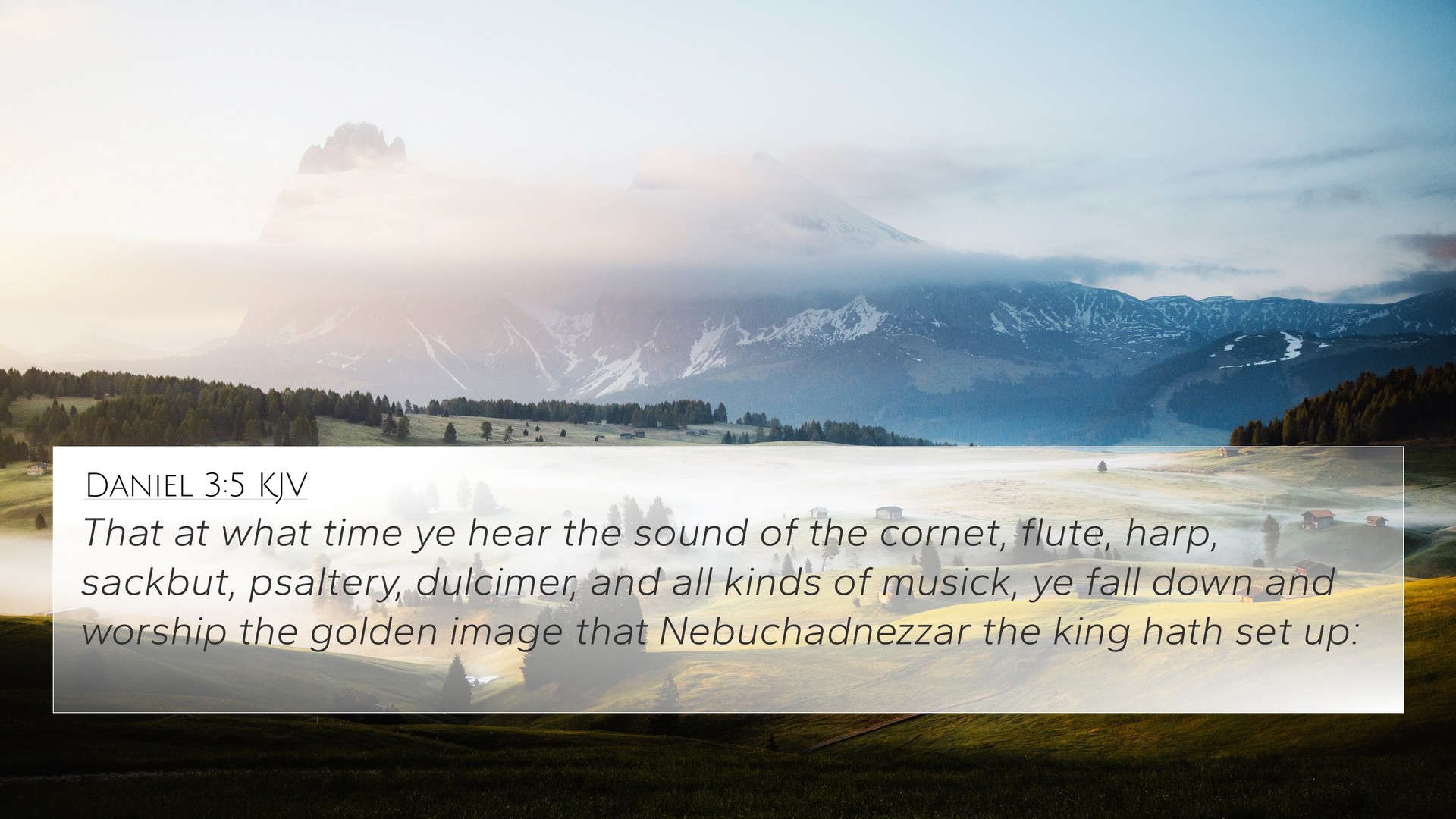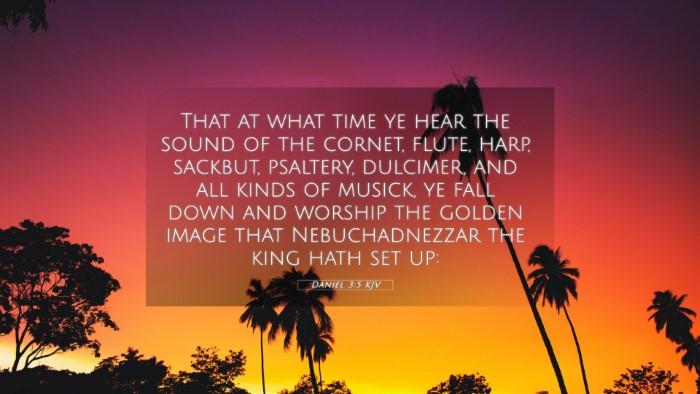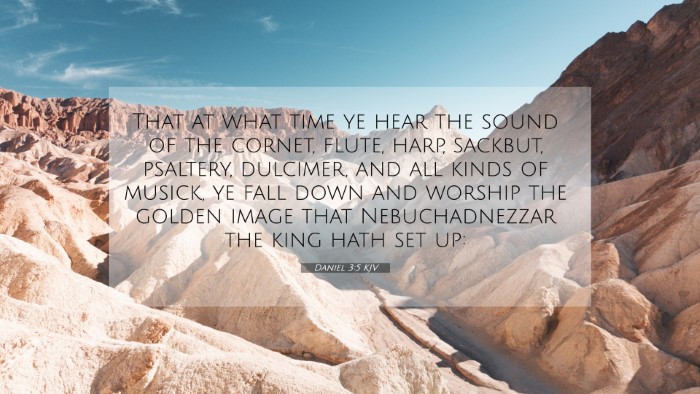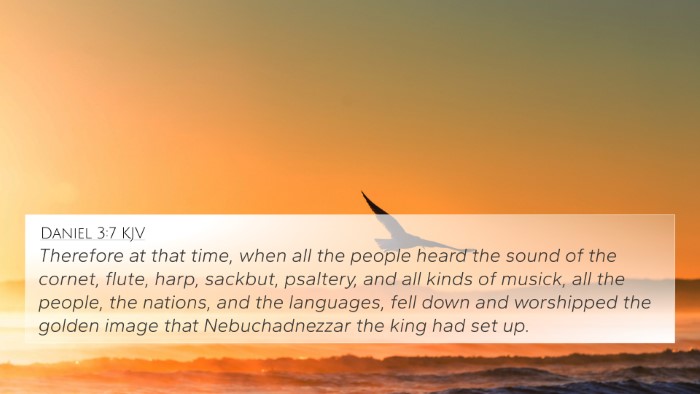Understanding Daniel 3:5
Verse: Daniel 3:5 states, "That at what time ye hear the sound of the cornet, flute, harp, sackbut, psaltery, and dulcimer, and all kinds of music, ye fall down and worship the golden image that Nebuchadnezzar the king hath set up."
Summary and Interpretation
This verse depicts a command that King Nebuchadnezzar issued, demanding that all his subjects bow to a golden image whenever they heard musical instruments play. The significance of this command lies not just in the act of worship, but in the broader implications of loyalty, faith, and idolatry.
Commentary Insights
-
Matthew Henry's Commentary:
Henry highlights that the king's decree represents a test of loyalty to God's covenant. When the music played, the people had a clear choice to worship the idol or remain true to their faith.
-
Albert Barnes' Notes:
Barnes emphasizes the power of music in this context, illustrating how it often accompanies worship or significant actions. The variety of instruments suggests a grand spectacle designed to draw people in.
-
Adam Clarke's Commentary:
Clarke discusses the implications of forced worship, noting that such acts conflict with genuine faith. He explains that true worship must come from the heart, not from coercion.
Cross-References
Daniel 3:5 connects with several other Bible verses that explore themes of idolatry, worship, and faithfulness to God. Below are some significant cross-references:
- Exodus 20:3-5: God's commandment against having other gods and making idols.
- Matthew 4:10: Jesus' rejection of Satan's temptation to worship anything but God.
- Revelation 13:15: The beast's demand for worship and the consequences of non-compliance.
- Isaiah 44:9-10: The futility of idol-making and the comparison to the true God.
- Romans 12:1: The call for living sacrifices as true worship to God.
- Philippians 2:10: The universal acknowledgment of Christ as Lord in response to His authority.
- 1 Corinthians 10:14: The command to flee from idolatry.
Thematic Connections
This verse serves as a critical point of discussion in many themes found in Scripture:
- Idolatry versus true worship: The tension between societal pressure and spiritual integrity.
- Faithfulness in persecution: How believers respond when their faith is challenged by authority.
- The significance of worship: Understanding worship as an action that connects heart, mind, and spirit.
Practical Applications
The lessons drawn from Daniel 3:5 encourage believers to be discerning in their worship practices, ensuring that their allegiance remains with God regardless of societal influences. It also invites reflection on the power of music and cultural symbols.
Using Bible Cross-References Effectively
For those looking to delve deeper into cross-referencing Bible verses, the following tools can aid in understanding:
- Bible concordances: Useful for locating verses and understanding themes.
- Bible reference resources: Helps in identifying connections and thematic analysis.
- Cross-reference Bible study methods: Practical techniques for studying interconnected Scriptures.
Conclusion
Daniel 3:5 serves as a powerful narrative that tests the fidelity of faith against the backdrop of coercion and idolatry. By engaging with the cross-references and insights from public domain commentaries, one can garner a richer, deeper understanding of the text and its implications for worship and devotion.





